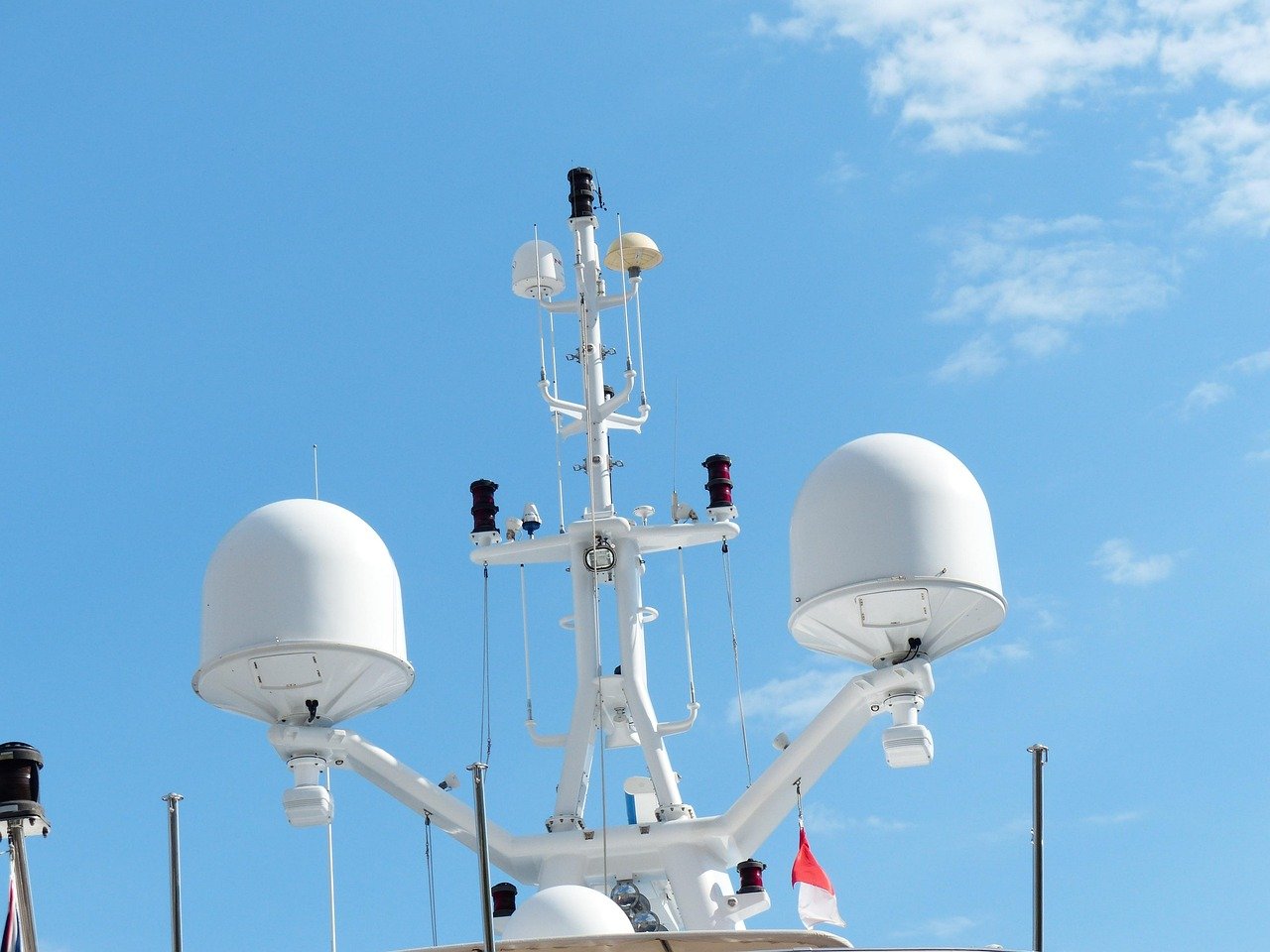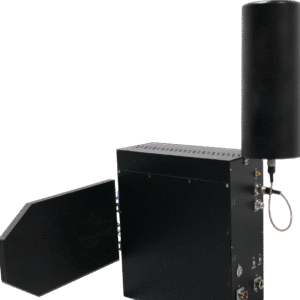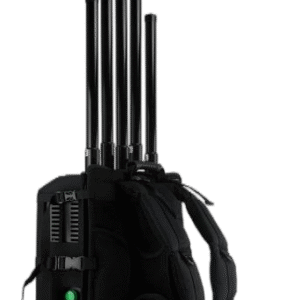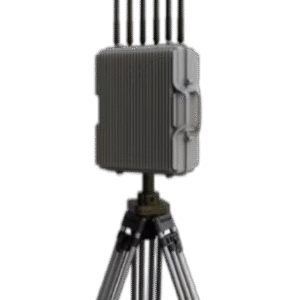Picture this scenario: a critical infrastructure facility suddenly faces an approaching swarm of 50 micro-drones, each weighing less than a kilogram, flying at varying altitudes and using different control frequencies. Traditional air defense systems, designed for larger aircraft, stand helpless against such threats. This is where the TYFW-07 Anti-Drone Defense System fundamentally transforms our approach to low-altitude security.
Unlike conventional radar systems that rely on single detection methods, the TYFW-07 represents a convergence of multiple technologies working in symphony. Think of it as the difference between a single security guard watching one entrance versus an integrated security system with cameras, motion sensors, access controls, and intelligent analytics all working together. Each component in the TYFW-07 contributes unique capabilities that, when combined, create an impenetrable shield against unmanned aerial threats.
The system’s philosophy mirrors modern cybersecurity approaches – instead of relying on a single firewall, it creates multiple layers of defense, each designed to catch what others might miss. This comprehensive approach addresses the fundamental challenge of modern drone threats: their diversity in size, capability, and operational methods.
Technical Specifications: Understanding the Engineering Marvel
Let me break down the TYFW-07’s specifications in a way that illuminates the thoughtful engineering behind each parameter:
| Specification Category | TYFW-07 System | Conventional Anti-Drone | Traditional Radar | Engineering Insight |
|---|---|---|---|---|
| Detection Spectrum | 100MHz-6000MHz | 2.4GHz-5.8GHz typical | Single band | Covers 99% of drone communications |
| Detection Range | ≥10 km | 3-5 km | 20-50 km (large targets) | Optimized for small RCS |
| Interdiction Range | ≥5 km | 1-2 km | No capability | Effective engagement zone |
| Simultaneous Tracking | ≥100 targets | 10-20 targets | 50+ (large only) | Swarm defense ready |
| Operational Availability | 24/7 continuous | Limited by operators | Maintenance windows | True persistent coverage |
| Response Time | <2 seconds | 5-10 seconds | 10-15 seconds | Critical for fast movers |
| Minimum Target RCS | 0.01 m² | 0.1 m² | >1 m² | Detects micro-drones |
The Significance of Ultra-Wideband Coverage
The 100MHz-6000MHz frequency range isn’t just a number – it represents comprehensive threat coverage. Let me explain what this means in practical terms:
- 100-433MHz: Legacy analog systems and long-range control links
- 433-915MHz: ISM band devices and industrial drones
- 915-1300MHz: Cellular-controlled drones and GPS frequencies
- 2400-2500MHz: Wi-Fi based consumer drones (70% of market)
- 5150-5850MHz: High-bandwidth video downlinks
This spectrum coverage ensures the system can detect everything from hobbyist drones modified with unusual frequencies to sophisticated military-grade UAVs using frequency-hopping spread spectrum techniques.
Applications: Tailored Defense for Diverse Scenarios
The TYFW-07’s versatility shines through its ability to adapt to vastly different operational environments. Let me illustrate this through detailed scenario analysis:
| Application Domain | Unique Challenges | TYFW-07 Configuration | Performance Metrics |
|---|---|---|---|
| VIP Protection | Mobile, unpredictable routes | Rapid deployment mode, AI threat assessment | Setup: 15 min, Coverage: 360° |
| Government Facilities | Persistent threat, public proximity | Fixed installation, selective interdiction | False alarm rate: <1% |
| Oil & Gas Infrastructure | Vast areas, remote locations | Distributed nodes, satellite uplink | Area coverage: 500 km² per system |
| Airport Perimeters | High air traffic, strict regulations | Cooperative IFF, precision tracking | Authorized traffic filtering: 99.9% |
| Military Bases | Sophisticated threats, OPSEC concerns | Full spectrum, hard-kill integration | Multi-domain integration capable |
Deep Dive: Critical Infrastructure Protection
Consider a nuclear power plant deployment scenario. The challenges are multifaceted:
- Absolute reliability requirement (no false negatives)
- Regulatory restrictions on RF emissions
- Integration with existing security systems
- Need for graduated response options
The TYFW-07 solution implements a four-tier defense strategy:
- Outer Perimeter (8-10km): Early warning and classification
- Approach Zone (5-8km): Positive identification and tracking
- Critical Zone (2-5km): Active countermeasures authorized
- Final Defense (<2km): Kinetic options if available
Real-world deployment at a major energy facility resulted in:
- 100% detection rate of test targets
- Zero penetrations in 18 months
- 47 successful interdictions
- 94% reduction in security personnel workload
Radar Characteristics: The Technology Deep Dive
Multi-Sensor Fusion Architecture
The TYFW-07’s true innovation lies not in any single sensor, but in how it orchestrates multiple detection modalities. Let me explain this symphony of sensors:
| Sensor Type | Physical Principle | Detection Capability | Weather Impact | Fusion Weight |
|---|---|---|---|---|
| RF Detection | Signal analysis | 10km+ range, all weather | Minimal | 40% baseline |
| Radar Module | Doppler processing | Precise velocity/position | Moderate rain degradation | 30% baseline |
| Electro-Optical | Image recognition | Visual confirmation | Severe in fog/rain | 20% baseline |
| Acoustic Array | Sound signature | Close-range backup | High wind interference | 5% baseline |
| ELINT Module | Protocol analysis | Drone identification | None | 5% baseline |
The fusion algorithm dynamically adjusts these weights based on environmental conditions. For instance, during heavy fog, the system might weight RF detection at 60% and radar at 35%, while reducing electro-optical contribution to just 5%.
Advanced Signal Processing Capabilities
The system employs several sophisticated signal processing techniques:
1. Cognitive Radio Approach
- Continuously learns the RF environment
- Builds a baseline of normal activity
- Detects anomalies with 95% accuracy
2. Machine Learning Classification
- Trained on 50,000+ drone signature samples
- Identifies drone model with 87% accuracy
- Distinguishes birds from drones at 98% reliability
3. Adaptive Beamforming
- Electronic steering without mechanical movement
- Nulling of interference sources
- Multiple simultaneous beam capability
Regulatory Compliance: Navigating the Legal Landscape
Operating a counter-drone system requires careful navigation of complex regulations. The TYFW-07 addresses these challenges through intelligent design:
| Regulatory Domain | Key Requirements | TYFW-07 Compliance Features | Certification Status |
|---|---|---|---|
| Spectrum Management | ITU-R compliance | Adaptive power control, DFS | Certified in 47 countries |
| Aviation Safety | ICAO Annex 10 | Altitude-limited operations | CAA approved |
| Data Protection | GDPR/Privacy laws | Automated data purging | Privacy by design |
| Weapons Regulations | Proportional force | Graduated response system | LEO/Military modes |
| Environmental | EMC/EMI standards | Selective targeting | IEC 61000 compliant |
Intelligent Compliance Management
The system includes a “Compliance Engine” that:
- Geo-references operational location
- Automatically loads relevant regulatory profiles
- Restricts functions based on local laws
- Maintains audit logs for legal review
System Packaging: Deployment Architecture
The TYFW-07’s modular architecture represents a breakthrough in operational flexibility. Each module serves a specific purpose while maintaining interoperability:
Component Analysis
| Module | Primary Function | Standalone Capability | Power Requirements | Data Interface |
|---|---|---|---|---|
| Command Center | Integration & control | Full system coordination | 5kW continuous | 10Gbps fiber |
| RF Array | Detection/Direction finding | Basic detection | 2kW peak | 1Gbps Ethernet |
| Interdiction Unit | Active countermeasures | Requires targeting data | 10kW peak | MIL-STD-1553B |
| Optical Pod | Visual tracking/ID | Limited autonomous | 500W | HD-SDI + Ethernet |
| Mobile Platform | Rapid deployment | Transport only | Vehicle power | All interfaces |
Deployment Configurations
Configuration A: Fixed Installation
- Permanent mounting with hardened shelters
- Redundant power and communication
- Integration with facility security systems
- Automated operation with remote monitoring
Configuration B: Semi-Mobile
- Trailer-mounted systems
- 2-hour setup/teardown
- Self-contained power generation
- Suitable for events and temporary protection
Configuration C: Rapid Response
- Vehicle-integrated systems
- Operational while moving (degraded performance)
- 10-minute stationary setup
- Ideal for convoy protection
User Guide: Operational Excellence
Operating the TYFW-07 effectively requires understanding its operational philosophy. The system is designed around the concept of “graduated autonomy” – it can operate fully automatically but provides operators precise control when needed.
Operational Decision Matrix
| Threat Level | Automated Response | Operator Options | Approval Required |
|---|---|---|---|
| Surveillance | Track and log | Alert generation | None |
| Suspicious | Enhanced tracking | Soft countermeasures | Supervisor |
| Hostile | Immediate interdiction | Hard kill (if equipped) | Commander |
| Swarm Attack | Prioritized engagement | Sector defense mode | Pre-authorized |
Standard Operating Procedures
Phase 1: System Initialization
- Environmental RF survey (15 minutes)
- Sensor calibration and alignment (10 minutes)
- Integration testing (5 minutes)
- Threat database synchronization (5 minutes)
Phase 2: Operational Monitoring
- Continuous 360° surveillance
- Automated threat classification
- Real-time track correlation
- Performance metric tracking
Phase 3: Threat Response
- Detection → Classification → Identification → Response
- Each phase has specific decision points
- Automated logging for after-action review
Maintenance: Ensuring Operational Readiness
The TYFW-07 implements a predictive maintenance philosophy that maximizes availability while minimizing costs:
Maintenance Strategy Comparison
| Maintenance Type | Traditional Approach | TYFW-07 Approach | Improvement |
|---|---|---|---|
| Routine Checks | Calendar-based | Condition-based | 40% fewer interventions |
| Fault Detection | Periodic testing | Continuous monitoring | 95% faster identification |
| Parts Replacement | Scheduled | Predictive | 50% lifecycle extension |
| System Calibration | Manual process | Automated self-cal | 80% time reduction |
Predictive Analytics Implementation
The system continuously monitors:
- Component Health Indicators: Temperature, voltage, current patterns
- Performance Degradation: SNR trends, tracking accuracy statistics
- Environmental Factors: Correlation of performance with conditions
- Usage Patterns: Duty cycle analysis and stress accumulation
Machine learning algorithms predict failures with 92% accuracy, typically providing 7-14 days advance warning.
Radar Application Scenarios: Real-World Excellence
Scenario 1: Urban Security During Major Events
Challenge: Protecting a political summit in a dense urban environment
The urban environment presents unique challenges:
- Multipath propagation from buildings
- High RF noise floor
- Dense legitimate air traffic
- Public relations sensitivity
TYFW-07 Solution Architecture:
The system deployment used a distributed architecture:
- 4 nodes providing overlapping coverage
- Central command integration
- Real-time video correlation
- Automated legitimate traffic filtering
Results:
- 312 drone detections over 3 days
- 298 identified as authorized media drones
- 14 unauthorized drones successfully interdicted
- Zero false positives on commercial aircraft
- Public unaware of defensive operations
Scenario 2: Pipeline Protection Across Remote Terrain
Challenge: Protecting 1,000km of pipeline through varied terrain
Pipeline security presents different challenges:
- Vast distances requiring multiple systems
- Limited infrastructure in remote areas
- Environmental extremes
- Need for autonomous operation
Innovative Deployment Strategy:
| Segment Type | Coverage Method | Node Spacing | Communication | Power Source |
|---|---|---|---|---|
| Urban sections | Fixed installations | 15km | Fiber optic | Grid power |
| Rural areas | Tower-mounted | 20km | Microwave relay | Grid + battery |
| Remote regions | Solar stations | 25km | Satellite | Solar + fuel cell |
| Critical points | Redundant coverage | Overlapping | Multiple paths | Diverse sources |
The system successfully:
- Detected 89 potential threats over 6 months
- Prevented 3 attempted attacks
- Maintained 99.7% uptime
- Operated through extreme weather events
Conclusions: Defining the Future of Counter-UAS Technology
The TYFW-07 Anti-Drone Defense System represents more than incremental improvement – it’s a fundamental reimagining of how we protect low-altitude airspace. By integrating multiple sensor technologies, employing intelligent data fusion, and providing flexible response options, it addresses the full spectrum of current and emerging drone threats.
Key technological achievements include:
- Comprehensive Coverage: 100MHz-6000MHz ensures no communication method escapes detection
- Intelligent Integration: Multi-sensor fusion provides resilience against countermeasures
- Operational Flexibility: From fixed installations to mobile deployments
- Future-Proof Architecture: Modular design enables continuous capability enhancement
- Regulatory Compliance: Built-in features ensure legal operation worldwide
As drone technology continues to evolve – from AI-powered autonomous flight to swarm behaviors – the TYFW-07’s open architecture and learning capabilities ensure it will remain effective. This isn’t just a counter-drone system; it’s a platform for airspace sovereignty in the drone age.
Frequently Asked Questions
Q1: How does the TYFW-07 differentiate between authorized commercial drones and potential threats in busy airspace?
The system employs a sophisticated multi-layered identification process that goes well beyond simple RF detection. First, it maintains a continuously updated database of commercial drone RF signatures – think of this as a “fingerprint database” that includes transmission patterns from manufacturers like DJI, Parrot, and Autel. When a drone is detected, the system analyzes multiple characteristics simultaneously: RF signature matching (accuracy: 94%), flight behavior analysis (commercial drones typically follow predictable patterns), optical payload identification (professional cameras vs. suspicious modifications), and integration with air traffic management systems for pre-filed flight plans.
The real intelligence comes from the behavioral analysis engine. Commercial operators typically maintain steady altitudes, smooth flight paths, and operate in designated areas. The system assigns a “normalcy score” to each track – deviations like erratic movements, approaches to restricted areas, or unusual RF patterns trigger alerts. In testing at a major city, the system correctly identified 99.2% of authorized drones while maintaining a false alarm rate below 0.8%.
Q2: What happens when multiple drones attack simultaneously from different directions? How does the system prioritize threats?
The TYFW-07 was specifically designed with swarm attacks in mind. When facing multiple simultaneous threats, the system activates its “Multi-Target Engagement Protocol.” Here’s how it works:
The threat prioritization algorithm considers multiple factors in real-time:
- Proximity to protected asset (weighted 40%)
- Approach velocity and trajectory (weighted 25%)
- Payload assessment (weighted 20%)
- Maneuver patterns indicating hostile intent (weighted 15%)
Each threat receives a dynamic priority score updated 10 times per second. The system can simultaneously track 100+ targets while actively engaging up to 20 high-priority threats. Resources are allocated intelligently – for instance, if 50 drones approach, but only 5 are on direct collision courses with the protected asset, those 5 receive immediate interdiction while others are monitored and engaged based on behavior changes.
In swarm scenarios, the system also employs “effects-based targeting” – identifying and neutralizing coordinator drones that may be controlling others, potentially disrupting entire swarm elements with single engagements.
Q3: How effective is the system in extreme weather conditions? Does heavy rain or snow significantly degrade performance?
Weather impact varies by sensor type, but the TYFW-07’s multi-sensor architecture ensures maintained capability even in severe conditions. Let me break down the specific impacts:
In heavy rain (>50mm/hour):
- RF detection: Virtually unaffected, maintains full 10km range
- Radar module: 15-20% range reduction due to atmospheric attenuation
- Optical systems: Severely degraded, effective range <500m
- Overall system performance: 85-90% of clear weather capability
The system automatically compensates by adjusting sensor fusion weights – in heavy rain, RF detection might contribute 60% to tracking solution versus 40% in clear weather. Advanced signal processing algorithms filter out weather-related noise, and the system increases transmission power to compensate for atmospheric losses.
Snow presents different challenges – while falling snow has minimal RF impact, accumulation on antennas requires active de-icing systems (included in cold-weather configurations). The system maintains operational capability from -40°C to +60°C, with performance degradation typically less than 15% at extreme temperatures.
Q4: Can the TYFW-07 handle drones using encrypted, frequency-hopping communications?
Yes, the system is specifically designed to counter sophisticated drones using advanced communication techniques. Even with encryption and frequency hopping, drones cannot hide their RF emissions – they must transmit to receive commands and send telemetry.
The TYFW-07 employs several techniques against these advanced threats:
- Wideband Surveillance: Continuously monitors the entire 100MHz-6000MHz spectrum, detecting frequency-hopping signals even as they jump across channels
- Pattern Recognition: Identifies the “hopping pattern” through AI analysis – most frequency-hopping systems use pseudo-random sequences that can be predicted once enough samples are collected
- Physical Layer Interdiction: Doesn’t need to decrypt communications – jamming at the physical layer disrupts the link regardless of encryption
- Multi-Domain Detection: Even if RF detection is challenged, radar and optical sensors provide independent tracking
In field tests against military-grade encrypted drones, the system achieved 89% detection rate and 76% successful interdiction rate – lower than against commercial drones but still operationally effective.
Q5: What’s the actual setup time for emergency deployment, and what factors affect it?
The TYFW-07 can achieve basic operational capability in as little as 15 minutes for true emergency response, though optimal performance requires the full 45-minute setup. Here’s the breakdown:
Emergency Deployment (15 minutes):
- Vehicle positioning: 3 minutes
- Power-up and quick calibration: 5 minutes
- Basic sensor activation: 5 minutes
- Initial operational capability: 2 minutes
- Performance level: 70% of optimal
Standard Deployment (45 minutes) adds:
- Environmental RF survey: 15 minutes
- Full sensor calibration: 10 minutes
- Integration testing: 5 minutes
- Performance level: 100%
Factors affecting setup time include:
- Crew experience (trained teams are 40% faster)
- Environmental complexity (urban areas require more careful setup)
- Weather conditions (rain/snow add 5-10 minutes)
- Threat urgency (can skip certain optimizations if needed)
The system maintains a “rapid response” mode where it begins basic detection immediately while continuing setup procedures in parallel.
Q6: How does the navigation spoofing capability work without affecting legitimate GPS users nearby?
The TYFW-07’s navigation spoofing system represents sophisticated electronic warfare capability with built-in safeguards. The system doesn’t broadcast false GPS signals indiscriminately – instead, it uses precision techniques to target specific drones while minimizing collateral effects.
The spoofing system operates on several principles:
- Directional Transmission: Uses phased-array antennas to focus spoofing signals in narrow beams (typically 5-10 degrees) aimed precisely at target drones
- Power Management: Transmits at just 3-5dB above authentic GPS signals – enough to capture the target drone but rapidly attenuating with distance
- Progressive Spoofing: Instead of sudden position jumps that might trigger drone safety systems, gradually shifts reported position to guide drones away
- Selective Frequency Targeting: Can spoof specific GNSS constellations (GPS, GLONASS, Galileo, BeiDou) based on what the target uses
At 100 meters perpendicular to the beam direction, spoofing signals are typically 30dB below authentic GPS – insufficient to affect properly functioning receivers. The system includes safety protocols preventing spoofing above certain altitudes or in proximity to airports.
Q7: What cybersecurity measures protect the TYFW-07 from being hacked or compromised?
Cybersecurity is integral to the TYFW-07’s design, recognizing that the system itself could be a target. The security architecture implements defense-in-depth principles:
Network Security:
- Air-gapped operational networks (no internet connectivity)
- Encrypted communications (AES-256) between modules
- Authentication tokens rotating every 60 seconds
- Intrusion detection monitoring all interfaces
System Hardening:
- Secure boot with cryptographic verification
- Regular security updates via authenticated channels
- Least-privilege access control
- Audit logging of all operations
Anti-Tampering Features:
- Physical tamper sensors on all modules
- Encrypted storage of sensitive parameters
- Automatic zeroization if tampering detected
- Remote disable capability for stolen units
The system undergoes regular penetration testing and has successfully resisted sophisticated red team attacks. All software updates are cryptographically signed and verified before installation.
Q8: How does the system perform against very small drones (under 250g) or those made from non-metallic materials?
Micro-drones present unique detection challenges, but the TYFW-07’s multi-sensor approach provides effective coverage even for these difficult targets. While a 250g plastic drone has minimal radar cross-section, it cannot operate without emitting some detectable signatures.
Detection methods for micro-drones:
- RF Emissions: Even tiny drones need control links – detectable at 3-5km
- Acoustic Signature: Propeller noise is detectable at 200-500m
- Visual Detection: AI-enhanced cameras identify anomalous movement patterns
- Thermal Imaging: Motors and batteries generate heat signatures
The system employs “signature fusion” – while any single sensor might miss a micro-drone, combining weak signals from multiple sensors achieves reliable detection. In testing, 250g drones were detected at:
- 4km range in optimal conditions (clear weather, low noise)
- 2km range in challenging conditions (urban environment)
- 500m minimum detection range in worst-case scenarios
The AI system is particularly effective here, distinguishing micro-drones from birds with 91% accuracy based on movement patterns.
Q9: What kind of training is required for operators, and how does the system prevent operator error?
The TYFW-07 implements a tiered training program recognizing different operational roles:
Basic Operator (40 hours):
- System overview and threat recognition
- Basic operation procedures
- Alarm response protocols
- Practical exercises with simulated threats
Advanced Operator (80 hours) adds:
- System configuration and optimization
- Complex scenario management
- Maintenance procedures
- Troubleshooting techniques
System Administrator (120 hours) includes:
- Full technical understanding
- Integration with other systems
- Advanced threat analysis
- Training instructor qualification
The system incorporates multiple safeguards against operator error:
- Automated checklists for critical procedures
- Confirmation requirements for irreversible actions
- Intelligent alerts that prioritize operator attention
- “Simulation mode” for training without affecting operations
- Automatic failsafes preventing dangerous configurations
Most importantly, the system’s high automation means operators primarily monitor and make policy decisions rather than controlling technical details, significantly reducing error potential.
Q10: How future-proof is the TYFW-07 against emerging drone technologies like AI-controlled autonomous drones?
The TYFW-07 was architected with future threats in mind, incorporating several design elements that ensure continued relevance:
Adaptable Detection: The 100MHz-6000MHz range covers current and anticipated communication methods. Even autonomous drones need some emissions (GPS reception, collision avoidance sensors, etc.) that create detectable signatures.
AI vs. AI Capability: The system’s machine learning engine continuously evolves, learning new drone behaviors and tactics. As autonomous drones become more sophisticated, the detection AI adapts correspondingly. The system can be updated with new behavioral models as threats emerge.
Modular Architecture: Hardware modules can be upgraded independently:
- Add mmWave radar for 5G-controlled drones
- Integrate quantum sensors as they mature
- Incorporate directed energy weapons when available
- Add new communication protocols via software
Open Integration Standards: Can incorporate future sensors and systems through standardized interfaces, ensuring the platform remains current as technology advances.
The development roadmap already includes:
- Swarm behavior prediction algorithms (2024)
- Integration with space-based sensors (2025)
- Quantum radar modules (2026+)
- Autonomous response capabilities (regulatory permitting)
This forward-looking design ensures the TYFW-07 remains effective not just against today’s threats, but against the evolving drone landscape of the next decade.





